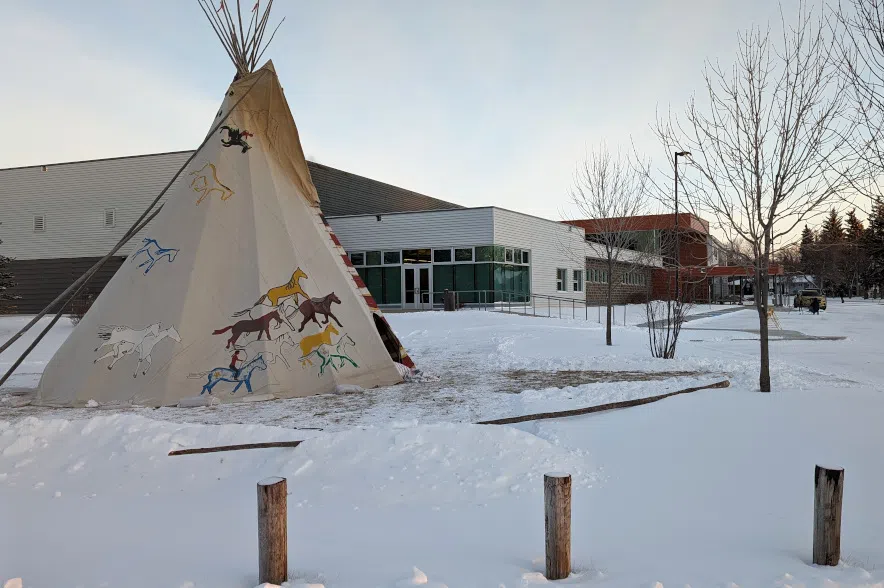For the second straight day, a pathologist told the inquest into the mass murders on the James Smith Cree Nation and in Weldon it’s unlikely that responding paramedics would have been able to save the victims who died in the attacks.
On Friday in Melfort, Dr. Shaun Ladham, Saskatchewan’s chief forensic pathologist, told the inquest about the autopsies he performed on five people – Robert Sanderson, Carol Burns, Thomas Burns, Earl Burns Sr. and Wesley Petterson – in the wake of Myles Sanderson’s stabbing rampage on Sept. 4, 2022.
Sanderson killed 11 people and injured 17 others during the attacks.
980 CJME is not reporting all of the details of Ladham’s testimony due to their graphic nature. He told the inquest about each of the five victims’ wounds and the amount of time it likely took them to succumb to those injuries.
On Thursday, Dr. Derek Musgrove relayed his findings from the autopsies he conducted on Bonnie Burns, Gregory Burns, Lydia Gloria Burns, Christian Head, Lana Head and Damien Sanderson.
Musgrove said that, because the James Smith Cree Nation is about 25 minutes away from the nearest hospital, it’s unlikely those six people could have been saved by EMS personnel who would have had to make a 50-minute round trip.
Ladham said the same thing Friday about the five people he examined, suggesting the severity of their wounds and the distance to hospital meant paramedics couldn’t have done the work necessary to save the victims’ lives.
The pathologist said all five people would have died within 20 minutes of being attacked.
READ MORE:
- Day 1: Jury selection, first witness at James Smith Cree Nation inquest
- Day 2: Emotions intensify as testimony continues at JSCN inquest
- Day 3: RCMP witness at JSCN inquest discusses drug trade, warrants
- Day 4: RCMP witness apologizes to veteran’s family at JSCN inquest
- Day 5: Psychologist shares assessment of Myles Sanderson at JSCN inquest
- Day 6: Inquest hears Sanderson wasn’t among Sask.’s most wanted before attacks
- Day 7: Sanderson’s release from custody scrutinized at JSCN inquiry
- Day 8: Parole officers, program facilitator detail Sanderson’s progress in prison
- Day 9: Psychologist offers apologies to families during JSCN inquest
Ladham said three of the victims he examined had multiple stab wounds, but Carol Burns and Petterson each had just one.
Earl Burns Sr., who fought with Sanderson and then chased after him in a school bus, was found dead hours later in the bus. Ladham said Burns Sr. had 14 stab wounds – a number that drew murmurs from the audience Friday – and died minutes after he stopped driving due to the effects of blood loss.
The RCMP has said Sanderson’s attack on Burns Sr. happened between 6:14 and 6:19 a.m., and noted a constable passed the bus in the ditch for the first time at 6:18 a.m. On Friday, it was suggested to the inquest jury that Burns Sr.’s time of death was between 6:14 and 6:29 a.m.
The inquest jury, among its other findings, will have to determine the cause and time of death for each of the victims.
In April of last year, the RCMP laid out a timeline for the events of Sept. 4, 2022.
The Mounties said Damien Sanderson was the first fatality. In subsequent attacks at different houses, Myles Sanderson killed Robert Sanderson, Christian Head, Lana Head and Gregory Burns. Earl Burns Sr., whom Myles had stabbed, chased Sanderson in a school bus before succumbing to his injuries.
At another home, Sanderson killed Carol Burns and Thomas Burns. After injuring other people in separate attacks, Sanderson returned to the Burns’ home and killed Bonnie Burns and Lydia Gloria Burns.
The Mounties said Sanderson then stole a vehicle and drove to Kinistino, where he tried to get gas and money from a resident. After he was rebuffed, he drove to Weldon, where he killed Petterson at his house.
Willow Cree Healing Lodge official testifies
On Friday afternoon, the inquest heard from Diane Raine, Sanderson’s parole officer for two months starting in February of 2021.
Asked if, in her dealings with Sanderson, she would have thought he’d be likely to do what he did, Raine said no.
“All my interactions with him (were) neutral,” she replied. “When he was upset, he would say he was upset and was able to tell me why.”
Raine is now the acting manager of assessment and interventions at the Willow Cree Healing Lodge on the Beardy’s and Okemasis’ Cree Nation near Duck Lake.
In her first interaction with Sanderson, Raine had to tell him his parole application and his transfer request to the Prince Albert Grand Council healing lodge both had been denied.
Raine testified that Sanderson handled the news well, but he did want to return to the Saskatchewan Penitentiary in Prince Albert. He told her he was triggered on the reserve because he grew up on a reserve and was reminded of his bad childhood experiences there.
Her testimony, like that from others earlier in the week, suggested that Sanderson’s time behind bars was basically unremarkable.
When Raine was asked if she had recommendations in light of Sanderson’s case, she said she’d like to see facilities offer more Indigenous-geared programming and would like to see some of programs made mandatory.
She told the inquest she believes Sanderson would have liked to have a deeper understanding of his culture since he was limited in his cultural knowledge.
— With files from 980 CJME’s Lisa Schick











